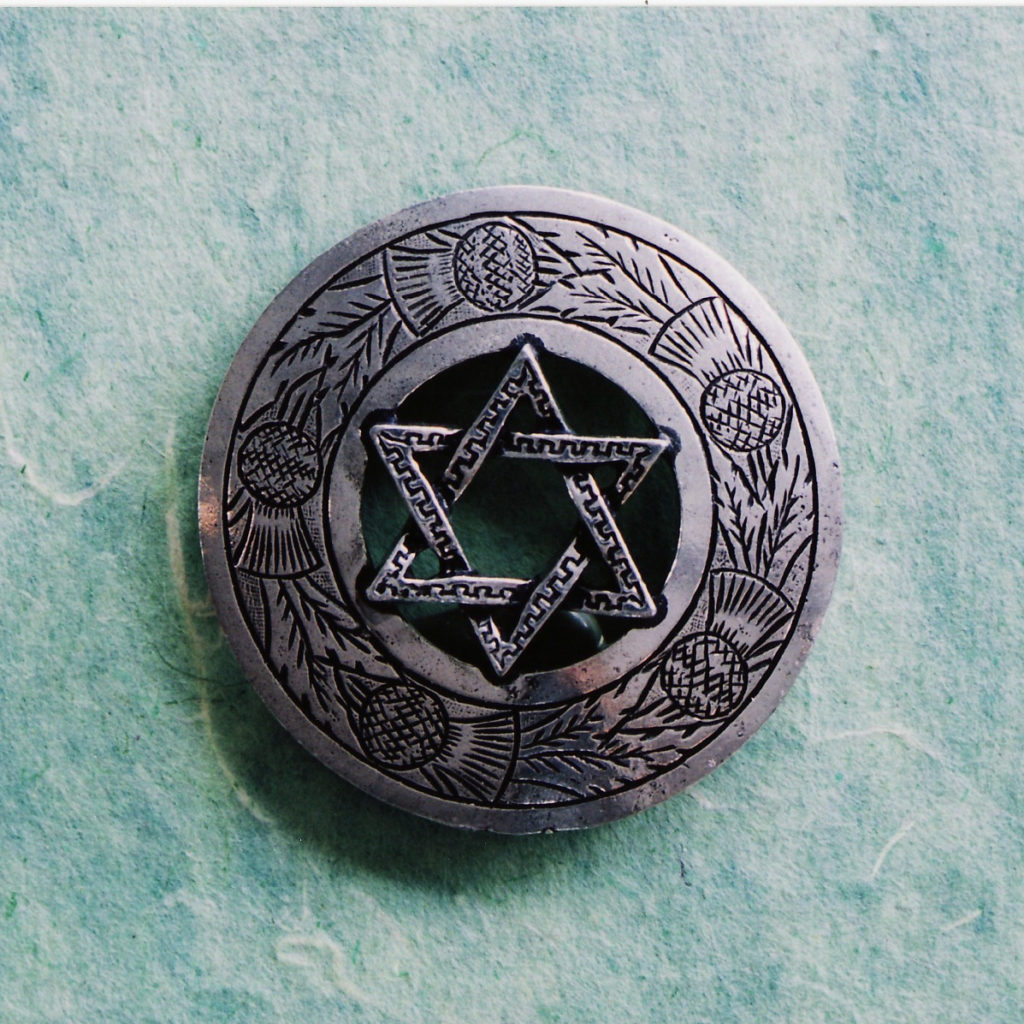April 6th –National Tartan Day
In both the United States and Canada April 6th is recognized as National Tartan Day in recognition of the contributions of the descendants of Scotland who helped build both countries. In the United States National Tartan Day has a special poignancy because the date chosen is the anniversary of the Declaration of Arbroath in 1320. The Declaration of Arbroath –also known as the Declaration of Scottish Independence– includes the lines: “As long as but a hundred of us remain alive, never will we under any conditions be brought under English rule. For we fight not for glory nor for riches nor for honor, but only and alone for freedom, which no good man surrenders but with his life.” Some historians claim the Declaration of Arbroath was an inspiration for the American Declaration of Independence. It is likely this theory is wishful thinking. However, although the Declaration of Arbroath was signed by the nobles and magnates of Scotland, it includes the revolutionary idea that common men –not kings– can change the fate of their own nation and demand a form of self governance.
Tag: scotland
Adam Smith –Romance, Economics, Scotland & the 18th Century…
March 9th –Anniversary of the Publication of Adam Smith’s Wealth of Nations in 1776
We look back at 18th century Scotland as a romantic period, but it was also a period when a handful of Scottish thinkers –including Adam Smith the father of economics– gave birth to the Scottish Enlightenment –the business world, and the world in general, would never be quite the same again. A revolutionary thinker –although definitely less political than David Hume– & a brilliant and influential writer, Smith invented the concept of the “invisible hand” to explain his arguments for an economic system that would develop naturally as the result of individual choices rather than strict bureaucratic control & two hundred and forty years later he is still celebrated as the father of economics.
The Bard’s Birthday –Remember Robbie Burns…
January 25th –Burns’ Night
The Bard’s Birthday. The author of Auld Lang Syne, Tam o’ Shanter, The Cottar’s Saturday Night, and the mournfully romantic Mary in Heaven, as well as hundreds of other classics Robbie Burns, the rustic “ploughman poet,” was beloved by lords and ploughboys alike in the late 18th century.
Despite his fame, Burns’ died near the edge of poverty before his fortieth birthday. But his friends –and his own work– wouldn’t let the rebellious, sarcastic, romantic poet be forgotten and began a tradition of celebrating his birthday every year with a haggis dinner, whiskey toasts and ritual readings of the Bard’s works. Over two hundred years later the tradition endures and “Burns’ Night” is now a global event for the Scottish community.
So on this, the 25th of January, remember remember Robbie Burns… A kilt and a glass of the good stuff and a toast to the man who made the rural Scotland of the late 18th century live forever through his words.
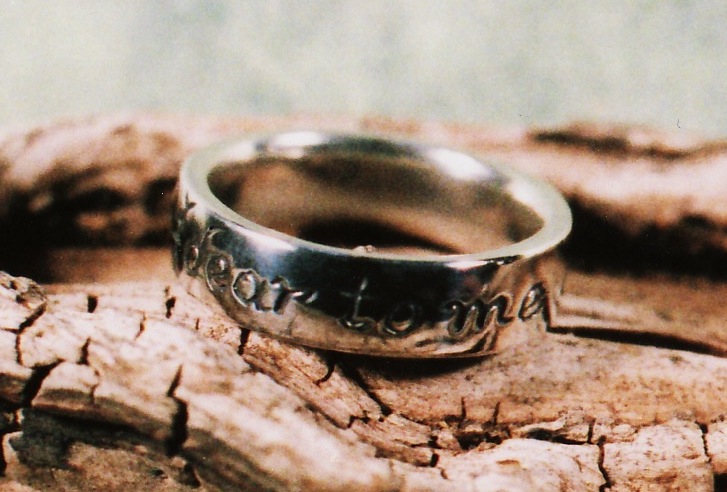
A Star in Scotland: Rome, the Celts, the Scots & the Jews
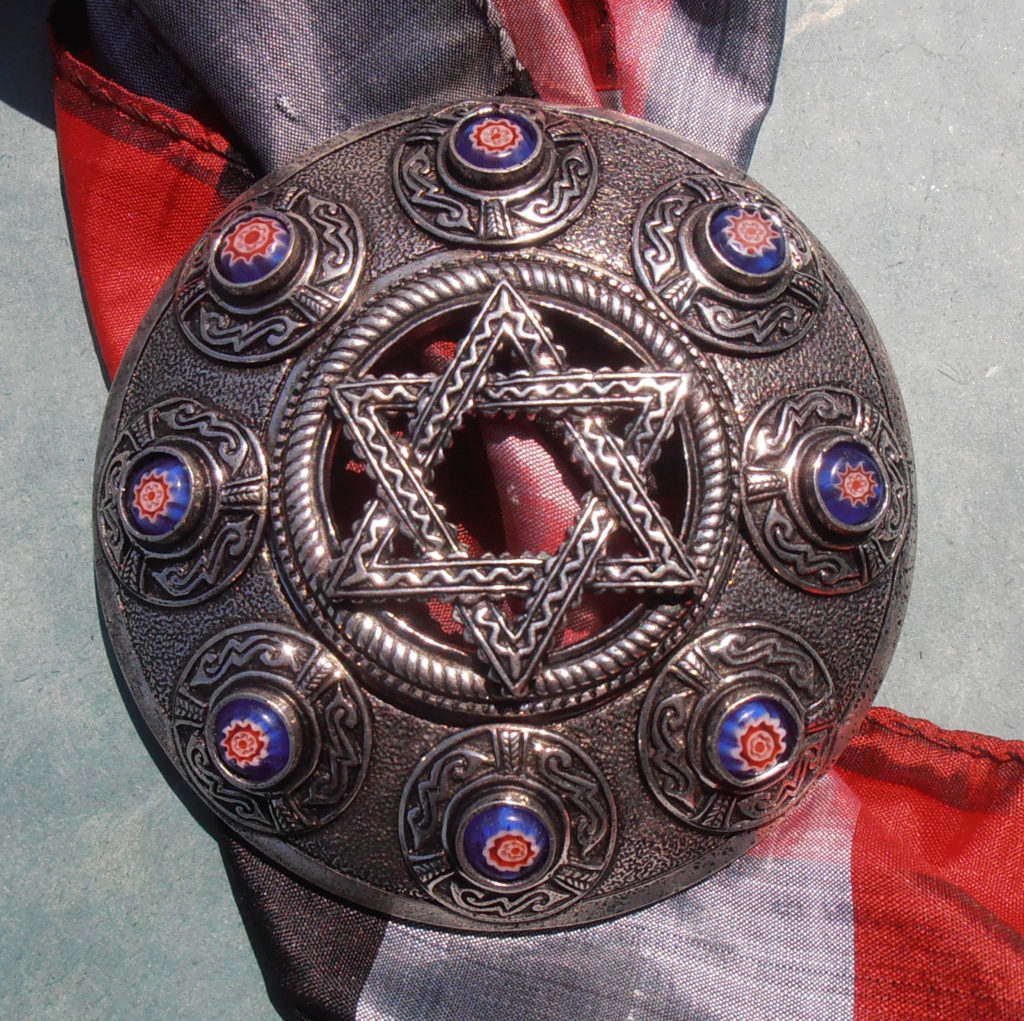
Between them Edinburgh and Glasgow have seven Synagogues. Today the vast majority of Jewish Scots can trace their ancestry to 19th century Poland. The pogroms that decimated many of the Jewish villages of Poland and Russia at the end of the 19th century coincided with the industrial boom of Scotland and, just as hundreds of thousands of Jews from the Pale fled Europe for America, tens of thousands of their cousins fled mainland Europe for the religious freedom of Scotland and the then booming industrial city of Glasgow.
However, while the modern story of Jewish Scotland is rooted in the 19th century, the origins of Scotland’s Jewish community are probably lost somewhere in the bloody shadows of Scotland’s Middle Ages –and may in fact date back to the Roman occupation of Britain.
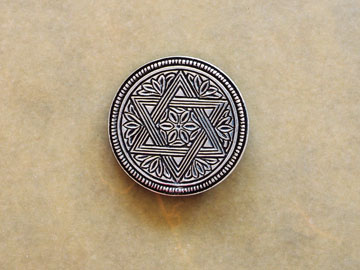
The Diaspora is generally thought of as a “modern” phenomenon. However, even before the Judaean Wars chronicled by Josephus it is estimated that roughly 50% of all Jews lived outside of Judaea and up to 10% of the population of some of the new cities established throughout the Empire to house the veterans of Rome’s armies were Jewish. When the remnants of Romanized Britain finally fell to the invading Angles and Saxons at least some of the families that fled the coast of what would become England (the land of the Angles) were Jewish.
Hordes of heavy household goods buried in the late 4th and 5th centuries around modern day Mildenhall and discovered in the early 20th century included some Jewish ritual objects. Over the next thousand years the story becomes increasingly murky. “Historic” Scotland –stripped of mystery, legend, opinion, conspiracy theory and pseudo-fact– is almost devoid of any significant written record prior to the 15th century and we are left with scattered images and fragmentary stories.
In honor of the Jewish Scots who have contributed so much to the history of Scotland we at Nagle Forge & Foundry make seven different sash pins and plaid brooches that feature a Star of David.
The Northmen: The Viking Influence on the Celtic World
Traders, Fisherman, Farmers, Artists, Carpenters, Builders, Predators…
The Vikings, when they swept out of their Northern homelands in the 8th century A.D. were all that and more. Viking warriors guarded the Emperors of Byzantium, dragged –literally– the King of the Franks from his throne & raided the monasteries of Western Europe.
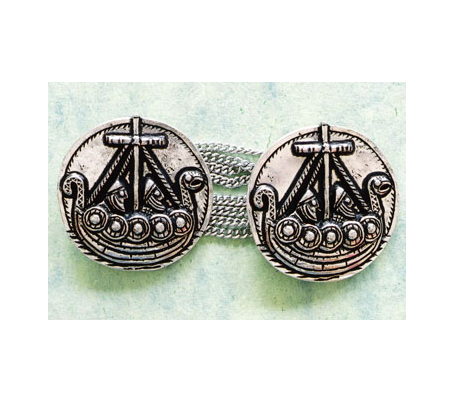
But it was as sailors and settlers –not predators– that the Vikings made their true impact on the Celtic world. Fierce and fearless sailors they plundered Ireland, England and Scotland… but they also settled in Waterford, Dublin, York, Normandy, Orkney and a hundred other places.
Today we like to think of the Celts as purely Celtic. The Vikings purely Scandinavian. But nothing could be further from the case. The Vikings were never mere predators, and rarely remained cultural outsiders for long.
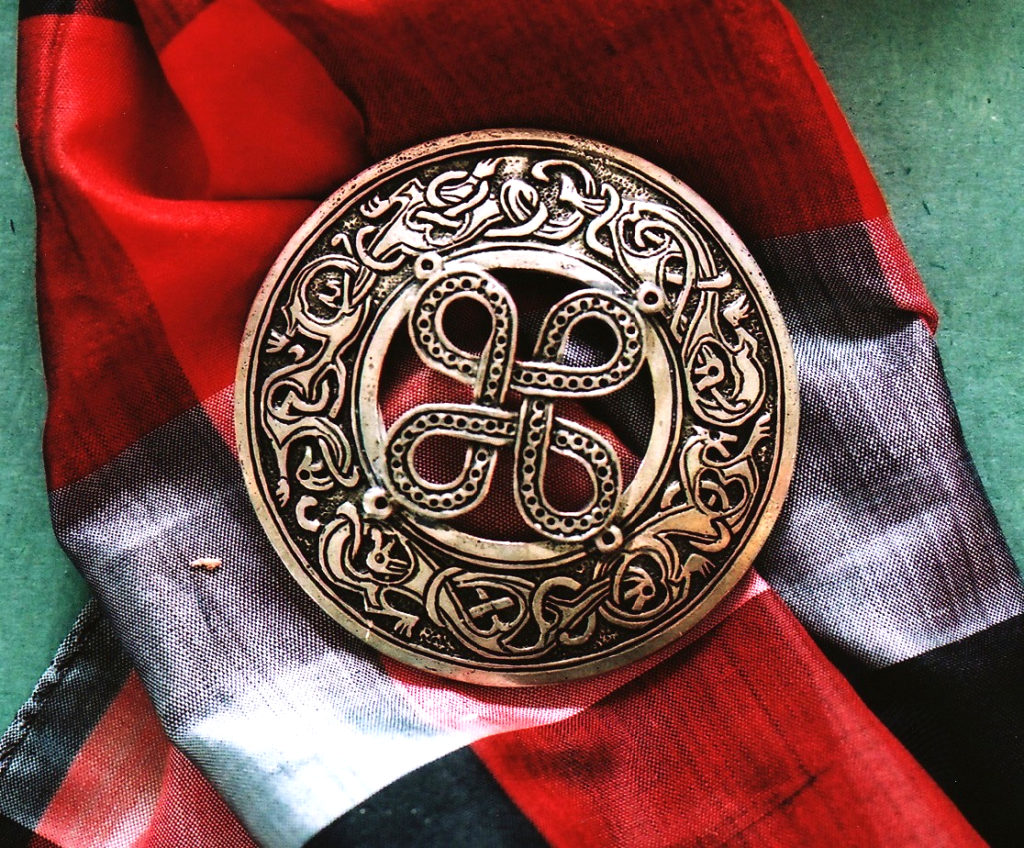
The Northmen came to Scotland as raiders, would be lords, sometime conquerors. Appropriately enough the Highlands and Islands would become one of the last strongholds of Viking traditions and Viking culture. While the Jarls of Orkney adopted Christianity relatively early they were slow to abandon their traditions of magic, feuds and outlaws. Many of the northern Clans seemed equally unconcerned with the outside world. And, although the Orkneys “officially” became part of the Scottish crown in the 15th century –as part of the dowery of the Norwegian Princess Margaret, a descendant of Vikings– the Highlands and Islands continued to follow their own star and as late as the 18th century Jacobite sympathizers from the Islands would continue to flee to Norway or Sweden.
To this day there are still those that have problems with the hybrid nature of the Viking influenced Northern Clans. Their art, their history, their culture and their family trees are never purely Celtic or purely Viking. Historians are as inclined as anyone else to take sides… They prefer to see the battles of the North –even the artistic battles of the North– in epic terms. To the defenders of a purely Celto-phile vision of Scotland, Scotland isolated from the rest of Medieval Europe, is where traditional Celtic art endured passed on with barely a hitch from Druid priests to Catholic monks until that ancient tradition was threatened by brutal Norse predators.
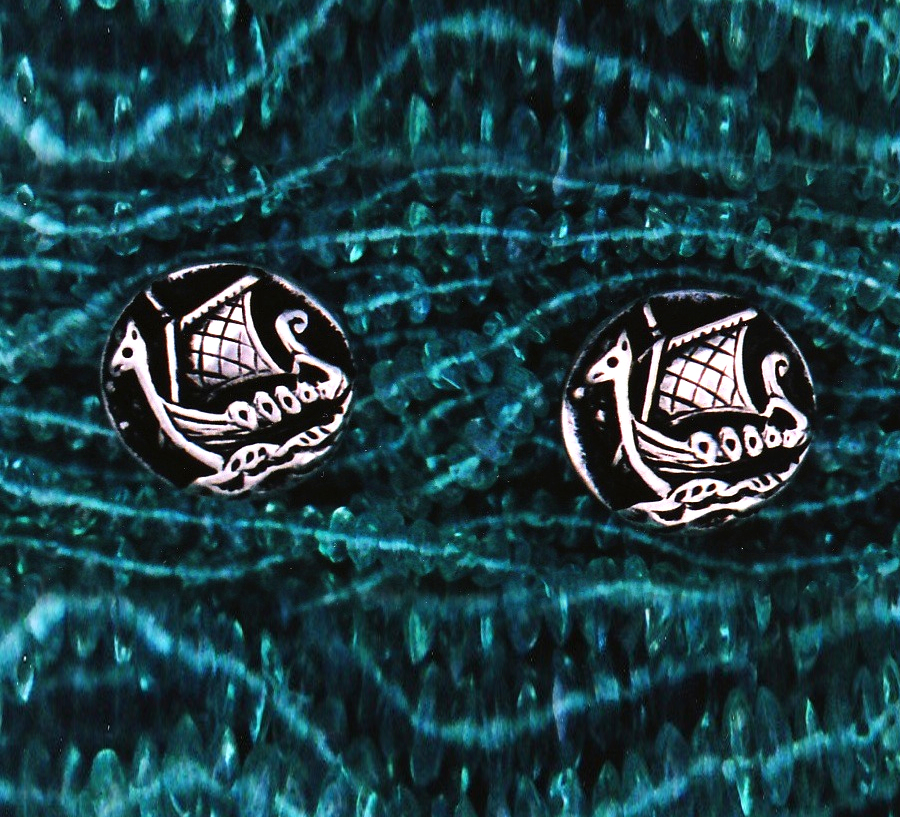
But the Celts and the Vikings –despite their battles– shared a strong connection to the natural world, a belief in the mystical otherworld and a self confidence reflected in art unlike any other.
This design is a reflection of that hybrid world that was both Viking and Celtic… a world that gave birth to the Northern Clans.
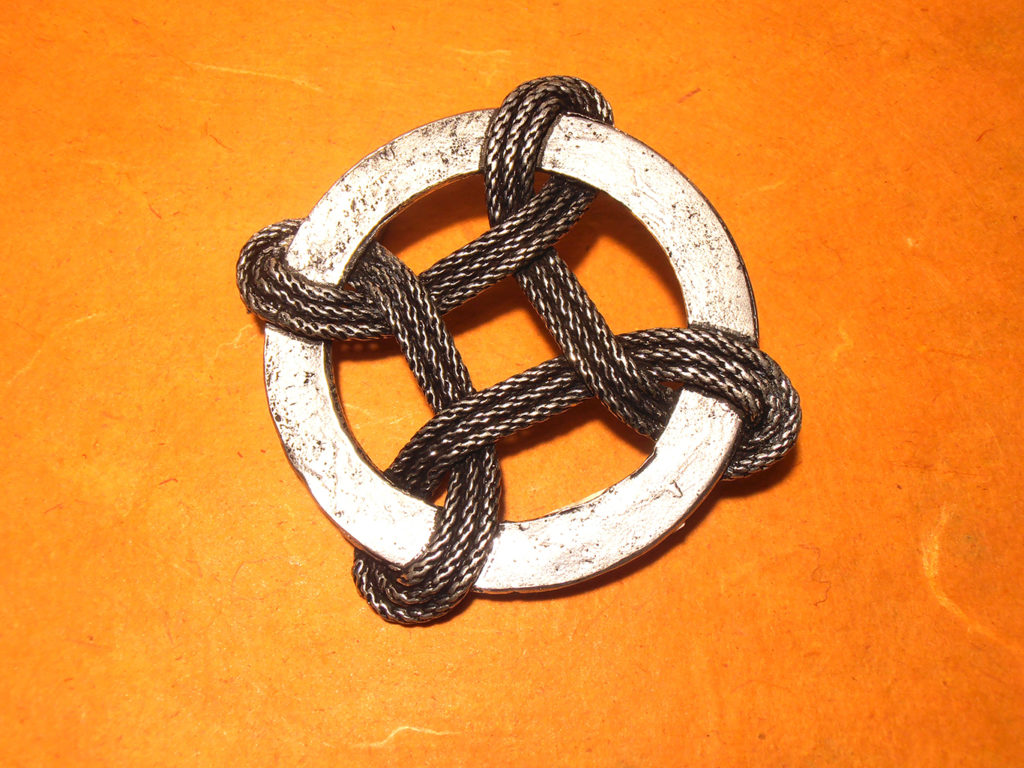
Both Viking and Celtic Art Share An Organic Origin
Celtic knotwork –whether it is the colorfully intricate ornamentation of an early Christian Irish prayer book, or the sinuous lines that decorate the hilt of a Bronze Age warrior’s dagger– is always the most immediately recognizable aspect of High Celtic art. What inspired those knots is, today, a mystery. But… before there was Bronze there was rope. Long before the first Celtic stonemason picked up a chisel to carve the very soul of the Celt into the stones, there were weavers, fisherman and sailors who could make mazes out of twine & rings out of rope. Like the Celts the Vikings were also people of rope. Their ships never sailed without rope, their fisherman never fished without rope, they never tied a bail or set a trap without rope… And rope and braid motifs are staples of Viking Art just as they were part of the daily life of Vikings and Celts alike.
The Celts and the Vikings shared a bloody and vibrant world. A world of old Gods and new. Sagas and stories. A world of conflict, and a world of courage. Today nearly half the clans of Northern Scotland can trace their lineage back to the Vikings. And Ireland’s smiling blue eyes? They might be a legacy of the Vikings as well.
Jewels of an Empire: Scotland, India, Burma and a World of Color…
A World of Color: Gems, Jewels, Treasure & a Great Big Plaid Brooch
Embracing Color in Scotland’s Era of Empire
Color has always played a tremendous role in traditional Celtic dress and has continued to play a tremendous role in traditional Scottish dress to this day. Tartan, after all, is practically synonymous with Scotland. (So ubiquitous in fact that some Scots feel tartan has just gotten too touristy…)
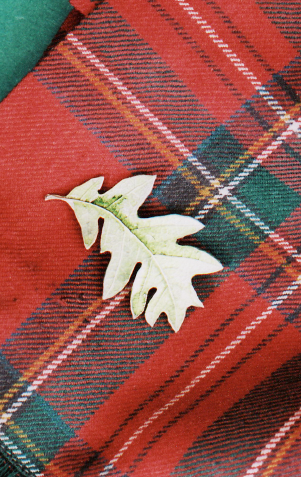
We think of Scottish style as being rooted firmly in the past. And, in fact, the Kilt is one of the oldest forms of “folk dress” worn in the British Isles. And as for tartan? Well… the historical evidence is scattered but tartan, or a tartan-like material dates back at least to the time of the first Ceasars… and may pre-date written history in the West. When the Celts were the dominant tribe of Central Europe, tartan was their cloak of choice.
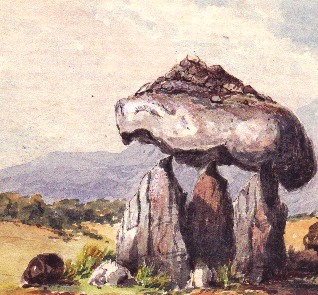
However, despite the ancient roots of Scottish Tartanwear, today “traditional” Scottish dress is very much rooted in the formal world of the Victorian era. The sewn-down pleats of the modern Kilt, the form-fitting men’s jackets, even the hard-soled Ghillie Brogues and quasi-military style hats still worn today, were all fashion innovations of the 19th century.
We think today of the 19th century as somehow more black and white than our own age, a murky mix of sepia and silver tones, dominated by stern men in stovepipe hats and a Queen in perpetual mourning. But the 19th century was, in fact, an extraordinarily colorful era and an era when color would play more of a role in men’s dress than it has at any time since.
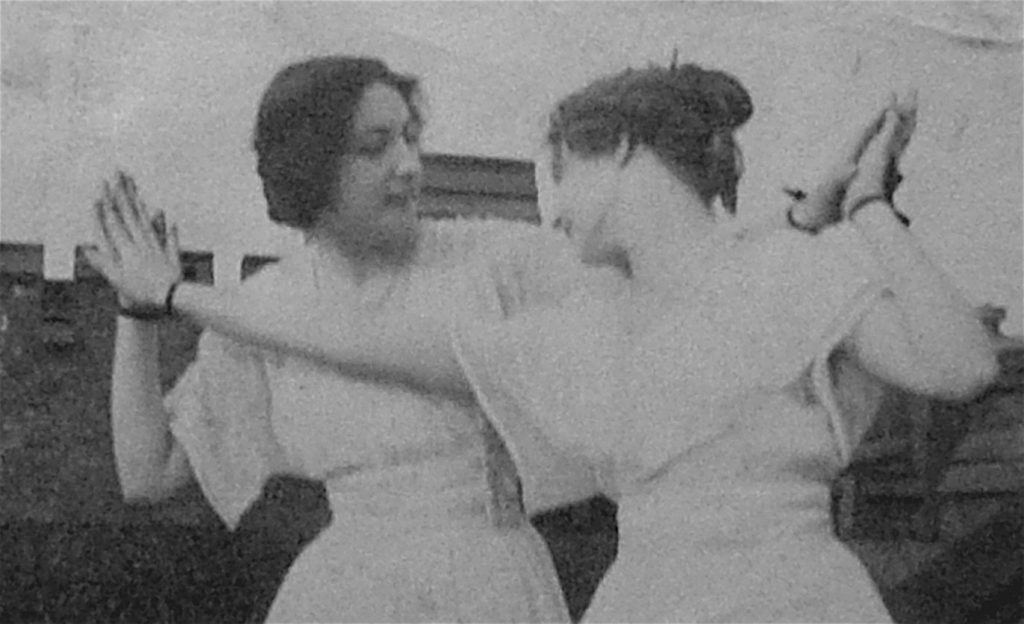
But the ladies weren’t alone in a world of forgotten color. The men of the 19th century –particularly the Scottish men of the 19th century– also lived in a world of color. And their, ahem, jewelry –Plaid Brooches, cufflinks, Belt Buckles, and other “furnishings”– was of a scale and style that seems startling in our far more conservative twenty-first century.
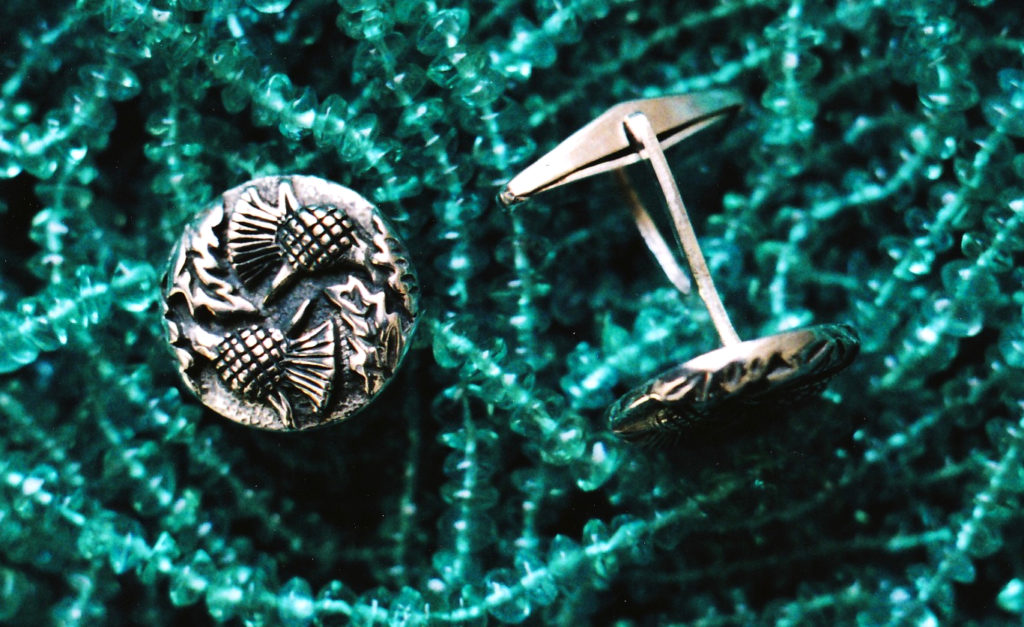
Many of the “furnishings” a gentleman might have worn for a formal event in the 1870s has fallen far out of fashion. But for formal Scottish events the “furnishings” of the 19th century are still very much en vogue. And no piece of “furniture” is more necessary or more iconic for a kilted man at a formal event than a formal Plaid Brooch.
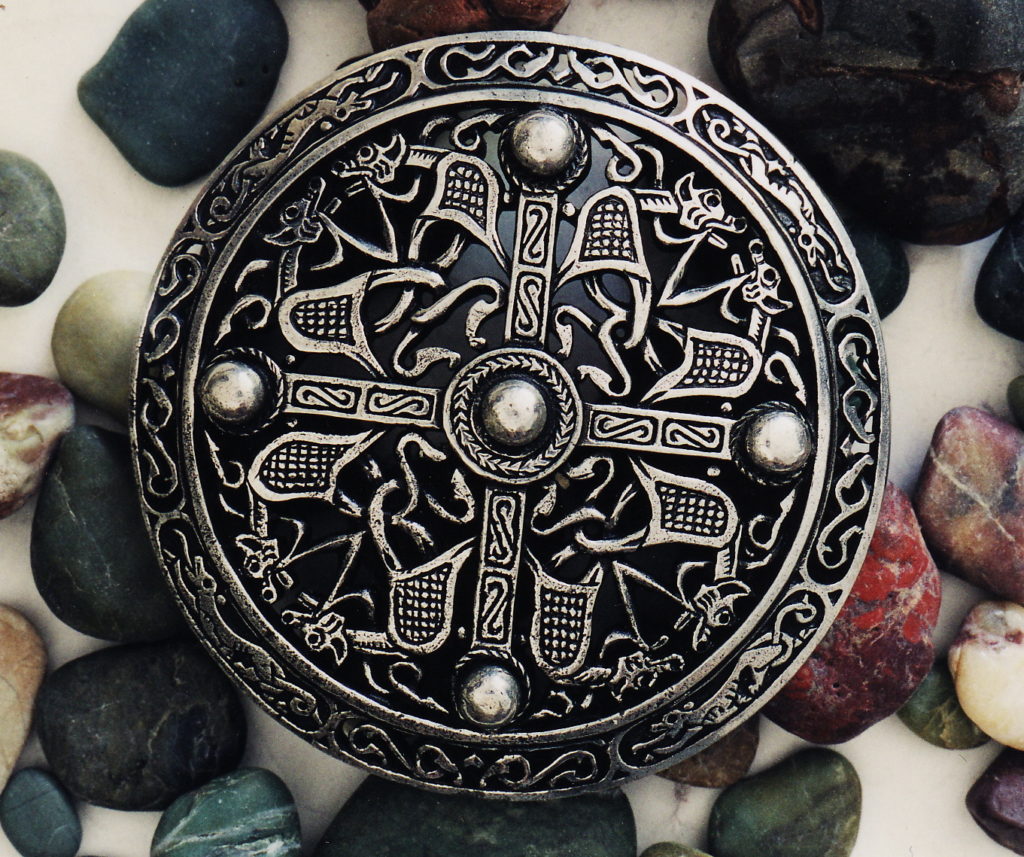
By the mid 19th century “Scottish Dress” or, as it was known at the time, “Highland Wear” had become Victorian-ized. In fact most of the modern rules of Scottish dress were enshrined during the Scottish Revival of the 19th century. For the well-to-do the Victorian age was an era of codified dress. Formal wear, Morning wear, Sports wear, Evening and, eventually, white tie and black tie.
Among the elite the old Highland habit of simply wearing one’s “best” for an event disappeared. The new codification of Highlandwear in the Victorian age coincided with the continued expansion of the industrial revolution –which helped to commercialize dress and accessories in a way that had never been possible before– and the expansion of Victoria’s Empire. For the Scots, in particular, the Empire provided a chance to re-assert their Scottish identity.
Service in the new “Highland” Regiments provided the Scots with a way to reclaim their warrior identity after the collapse of the Jacobite cause. It also gave many Scots a path back to prosperity and respectability. The sons and grandsons of the Scots who fought at Culloden who joined the King’s –and then the Queen’s– Regiments had an opportunity to earn the Crown’s trust and, perhaps, regain lands and titles lost in the aftermath of the Culloden defeat.
And, as the 1850s progressed and well-to-do Englishmen and women traveled north to enjoy their Highland vacations, many Highlanders travelled overseas to battle for the fast expanding Empire.
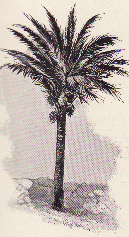
Fairly early in the 19th century the Scots adopted the idea that for “dress wear” or “evening wear” a Plaid Brooch with a stone –real, fake or obviously glass– was the must have accessory. But… as the century changed and the Scots became far more worldly –in fact many Scottish military families would traverse the globe in the 19th century– the gems that were incorporated in a Scottish gentleman’s “furnishings” evolved and became far more exotic.
The Scots had always loved color. And in the 19th century a world of gems opened up to them. The 19th century Scottish Revival coincided with the rise of the British Empire and the era of the Raj and some of the best Scottish-made jewelry of the 19th century features Indian Rubies, Sri Lankan Moonstones & Burmese Jade.
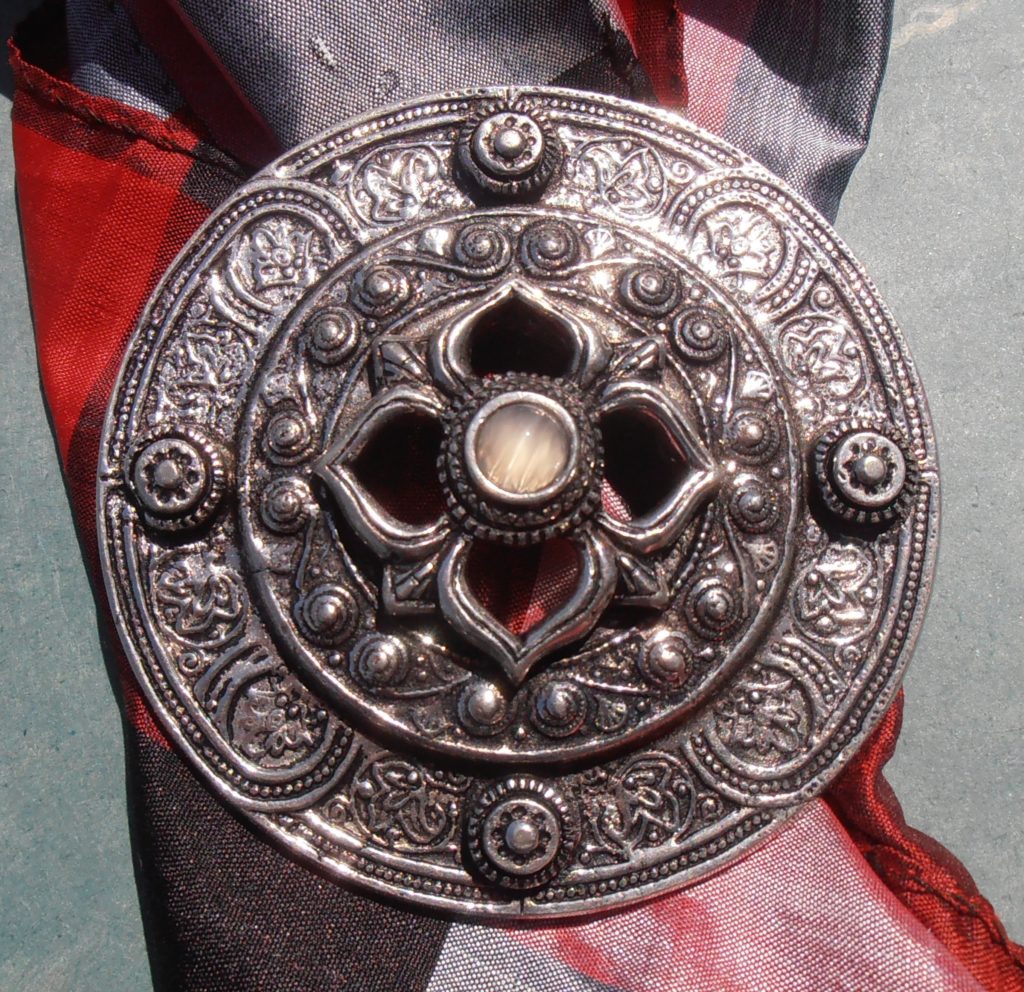
To modern eyes the colors used in 19th century Scottish dress often seem hopelessly garish, unnervingly gaudy. (The well dressed Scottish man of the 1850s was as liable to pair his kilt with a form fitting silk tartan jacket and a velvet cape as he was to don the now traditional black wool.)
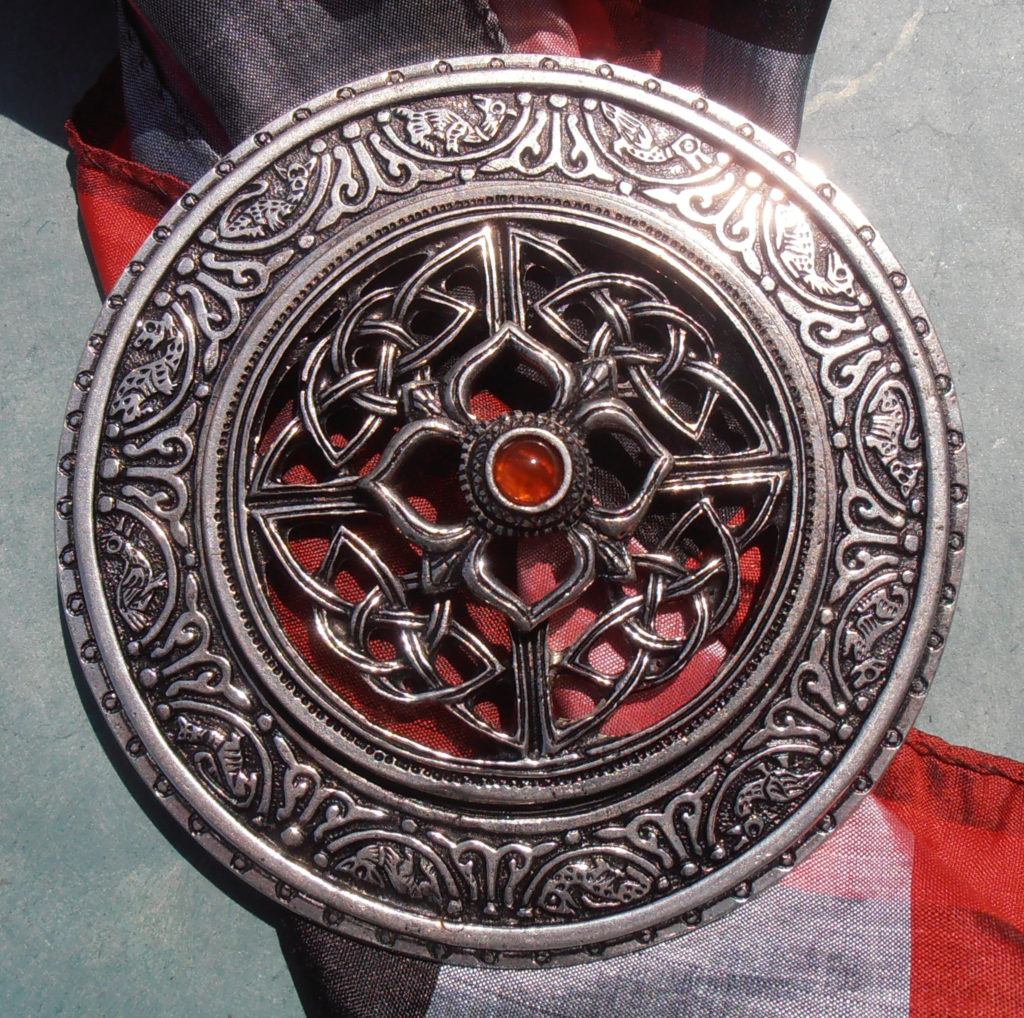
Fakes –or man made stones– also found a place in Victorian era Scottish jewelry. For modern shoppers trying to find an “authentic” stone can be a bewildering experience. In many ways we have a far too narrow view of Victorian fashion and a far too narrow view of what is and is not authentic. The 19th century Scots were not constrained by the conviction that they had to wear an authentically “Scottish” stones. They were authentic Scots –who in their own way were recreating what it meant to be Scottish in an era of industrialization, war and Clearance. Thus we recommend in the twenty-first century to shake free the rules we have imposed on ourselves, remember that although all of our photographs of our great grandparents may be in black and white that those people, our ancestors, lived in color. And thus we recommend that when shopping for a Plaid Brooch to remember the world of color of the ancient Celts, the world of color of the Victorians, and the world of color of our own age.
The Scottish Industrial Revolution & the Making of Modern Scotland
Today the Scotland that is cemented in our collective imagination as the “traditional” Scotland is very much a creation of the 19th century… a hazy combination of Victorian Romanticism and historical novels that seem to have sprung full formed from some rocky loch side castle in 1855. The romantic in all of us prefers to forget the harsh reality of the Scottish Industrial Revolution. Instead… “Scotland” generally conjures up visions of Queen Victoria. (And rightfully so –HRH’s near life-long love-affair with Scotland cemented a particular image of Scotland in the public imagination.)
However, while Queen Victoria’s long love affair with Scotland is one of the enduring tales of her reign it was, by the last decades of her life, a love affair that had little to do with the Scotland that most Scots knew.
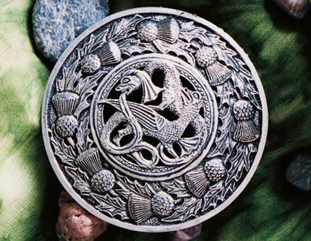
By the 1880s Scotland was in the midst of an industrial boom &, while the romantics might decry urban Scotland as being somehow less genuinely “Scottish” than the romantic Highlands, the truth was that by the 1890s most of the grandchildren of the romantic Highlanders had either emigrated or headed south to join the industrial boom of Glasgow and the Clyde shipyards.
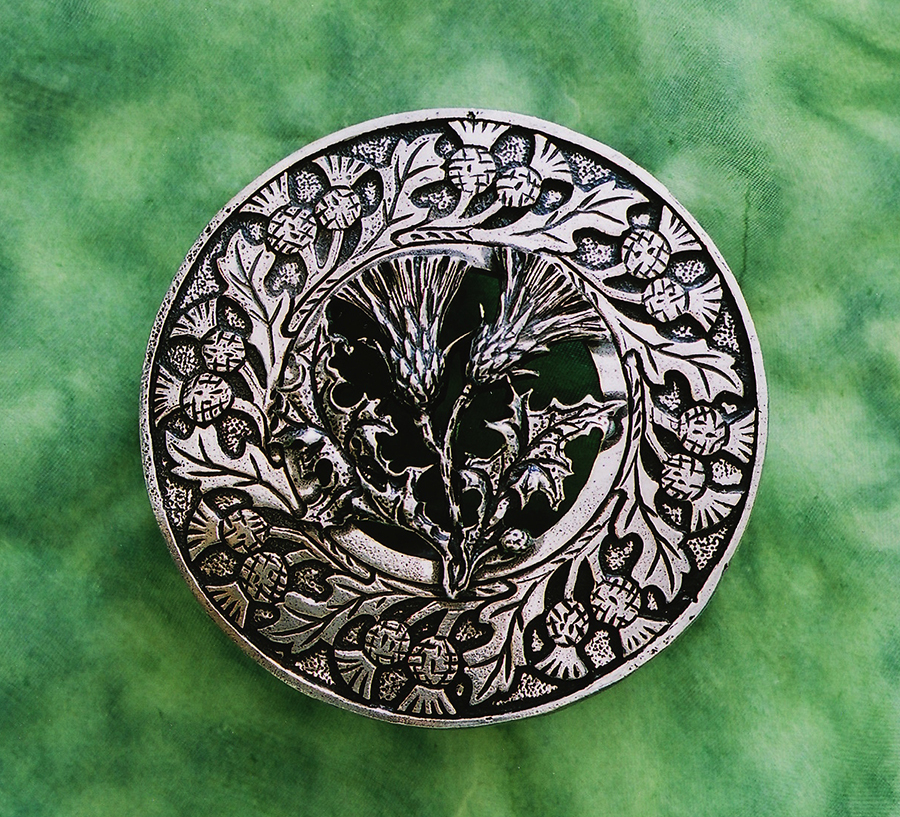
Glasgow and Edinburgh in those days were gritty loud cities. But the harsh urban environment of Glasgow (in particular) gave birth to an artistic Renaissance.
The industrial boom helped create a new generation of Scots with a new vision of what Scottish art and design could be… and the industrial know-how and money necessary to make that vision a reality. The full flowering of Scotland’s industrial boom coincided with an international interest in a revived “Arts & Crafts” culture which celebrated function, form and materials over the over-wrought surface decoration that had dominated “design” back in the 1850s.
Scottish designers and craftspeople such as Charles Rennie Mackintosh, Herbert MacNair and the sisters Margaret and Frances MacDonald (known collectively as the “Four Macs”) became leaders of the new Scottish Art Nouveau movement. The industrial boom of Glasgow led to a building boom & by the late 1890s public and domestic architecture alike was touched by this new vision of Scottish Art. The old icons of Celtic knots, Wild Thistles, Dragons and nature inspired motifs endured and were transformed by artists who were more than willing to look to the past for inspiration but who had no desire to recreate a High Victorian fantasy.


